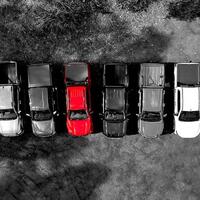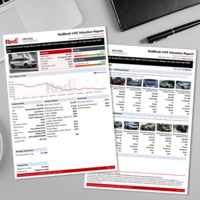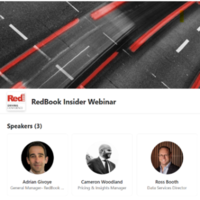The RedBook Insider: I SEE RED
Used vehicle prices continue their downward trend, with the largest drops coming from large passenger segments as Australians' love affair with SUVs continues. SUVs now make up over 44% of used car volumes, up 2% on last year. However, as you can see below, it isn’t necessary for all makes and models
In category terms, the “mainstream” segments for passenger, SUV and light commercial have all come off a similar amount, between 13-14% from their peak, while in the “upper/premium” segments, the softening has been much more pronounced, with passenger declining 21%, SUV 27% and light commercial as much as 33% from their respective peaks.

Category wide used car prices are now at 123% of January 2020 levels, down from the 139% peak in late 2022. Whilst these are certainly not what many want to see, it is not necessarily all bad news.
According to carsales.com.au, used car sales volume has reached its highest level this month since May 2023 (and highest level between 2022 to present day). This upward movement signals growing consumer preference for used vehicles, likely due to economic pressures leading to an increased focus on value for money and the depreciation benefits of buying used cars. It is this kind of buyer behaviour that is what we believe is behind the resilience of the mainstream segments in comparison to the upper/premium alternatives.
Taking this into account, older vehicles (i.e. those over 4 years of age), particularly the mainstream market segments are likely to see sustained demand and price buoyancy as they represent more affordable mobility solutions. Conversely, premium vehicles are likely to face continued downward pressure due to their higher price points and a shrinking pool of cashed up buyers in an uncertain economic climate.
Recent Posts
-
 The RedBook Insider: Emerging Divergence in the Popular 4x4 Ute Segment: Heavy-Duty Performance vs Hybrid-Electric Innovation30th September 2025
The RedBook Insider: Emerging Divergence in the Popular 4x4 Ute Segment: Heavy-Duty Performance vs Hybrid-Electric Innovation30th September 2025 -
 The RedBook Insider: Introducing RedBook LIVE: Smarter, Faster, and More Accurate Automotive Intelligence30th September 2025
The RedBook Insider: Introducing RedBook LIVE: Smarter, Faster, and More Accurate Automotive Intelligence30th September 2025 -
 The RedBook Insider: Introducing the RedBook Insider Webinar Series30th September 2025
The RedBook Insider: Introducing the RedBook Insider Webinar Series30th September 2025
